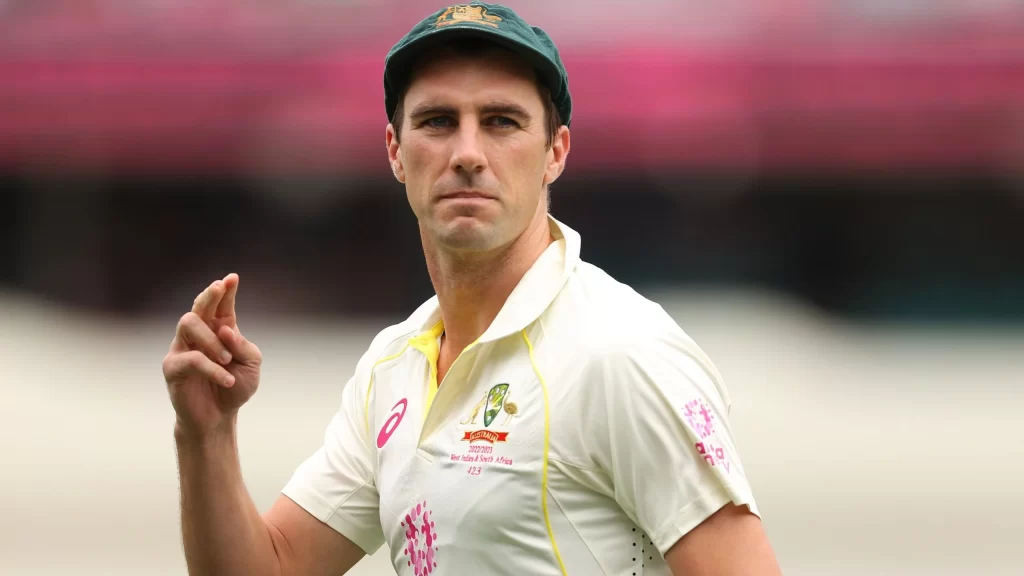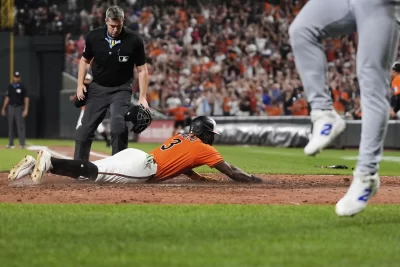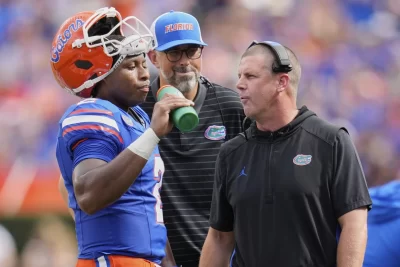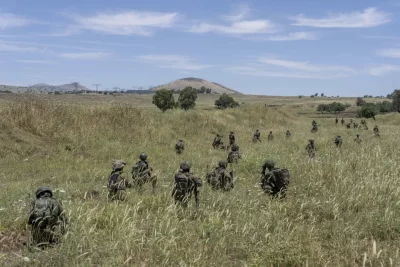
Pat Cummins and Mitchell Starc have played together for Australia for over a decade now. But it’s unlikely that they’ve had a longer chat during training than the one they had during Australia’s final training session before their opening World Cup game in Chennai. It commenced after the pace-bowling duo had delivered a dozen or so deliveries each in the net to Mitchell Marsh and Steve Smith. And it was Cummins doing most of the talking to start with.
It seemed to mainly centre around tactics and strategy with Australia’s captain making some suggestions to Starc.
That is before the senior fast bowler took charge of the discussion. And for the next 20 or so minutes, it was Starc who held court. In rather animated fashion too, waving his hands around while setting virtual fields. There also seemed to be various recommendations as to what lines and lengths he’d want the Aussies to target at various stages of the opposition innings. The conversation then also drifted into Starc displaying different grips on the ball while possibly describing his bag of variations. Cummins did chip in with his own thoughts occasionally. For most parts though, he looked like an eager student soaking in all the information coming his way, especially after coach Andrew McDonald jumped in as well.
Cummins bowled a short spell at training on Wednesday (October 11) in Lucknow a day before Australia take on South Africa in their second game of the tournament. It was mainly a dozen or so deliveries bowled off a short run on a side pitch to nobody, but assistant coach Daniel Vettori stood behind the stumps. And once done, he walked straight to Josh Hazlewood this time around. Hazlewood was sat on a chair, having had a short burst himself in the searing heat and humidity of Lucknow. This chat was a lot less animated, considering Hazlewood stayed seated. And it wasn’t the longest either, with Marcus Stoinis soon joining the two fast bowlers, resulting in the topic shifting more towards power-hitting.
It’s only understandable, however, if Cummins does feel the need to pick the brains of those who’ve played this format a lot more than he has, especially in recent years. Or that if he feels the need to get a refresher course on some of the finer and intricate aspects of 50-over cricket. For, it’s always felt like every time Cummins has come back to play ODI cricket, the format has changed on him. It’s evolved. It’s moved on. And it’s created a new niche to how it used to be whenever he’d have last played it regularly.
It’s probably the reason why we’ve never really quite been able to ascertain just where the 30-year-old New South Welshman features in terms of the best to have played in this format.
Cummins the Test bowler is already on his way to be a hall of famer. Cummins the T20 bowler has had his moments and has also attracted some of the biggest IPL deals in recent years. But the jury is always out on Cummins the one-day bowler. If anything, there isn’t enough sample size to really get the perfect reading on him in this format.
Cummins has played 20 ODIs since the end of the last World Cup, including 4 in the last few weeks. Hazlewood and Starc have played 31 and 27 matches respectively in that time. Cummins has 30 wickets at 31.90 in those 20 matches with a best of 4/35 against Sri Lanka in Pallekele last year. Purely as numbers stand, there’s not much you can take away from them. He’s done decently enough and has been the second most successful bowler in the death for Australia in between the two World Cups. But it’s difficult to make out what they really do say about Cummins the ODI bowler if anything at all.
To his credit, Cummins himself feels like he’s in “as good a place as ever” with ball in hand in this format. But did acknowledge that it’s constantly a role that keeps changing.
“I’m really happy where it is. I feel like it’s in as good a place as it ever has been. I think early in my career, I found it a hard balance between Test cricket and T20, like getting too funky. I always find with one day cricket; your roles can be very different. Being an opening bowler with a ball that swings is very different to coming on first change, maybe bowling cross seamers where you’re trying to almost defend and get your wickets through pressure. So, it’s a different kind of challenge to the other formats, but yeah, I feel in a really good place, and I enjoy the challenge of having to almost be prepared for anything in terms of death bowling or just basics or trying to create a wicket out of nothing. So, yeah, pretty happy,” he said.
Cummins is also the first to accept that the vagaries of the format also make it at times a more unique challenge than the other two, and perhaps even more taxing in the context of a day’s play.
“I think the biggest challenge is you’ve got 10 overs. It’s actually quite a physical format I find it probably the most physically taxing if you’re playing two or three games in a week. We’re doing 15kms in a 50-over match. I think in T20, if you bowl one really good over, that can be match winning. I think in one-day cricket, that’s not normally the case. And it’s rare that the conditions are really in the bowler’s favour, which is fine. It’s just a challenge you’ve got to try and deal with. So yeah, it’s tough, but I do enjoy it,” he added.
You would of course never take Cummins lightly or even underestimate him regardless of what version of the game he’s playing. When Pat Cummins has a cricket ball in his hands, regardless of what colour it is, he’s a threat, probably the ultimate threat.
But when it comes to ODIs, there’s always a feeling that Cummins is learning or adjusting to its forever changing moods and modes on the fly. Just like he’s had to learn about captaining the Australian team on the job. And perhaps we will learn too by the end of this World Cup where Pat Cummins the ODI bowler does stand, even as he continues to discover it for himself.







